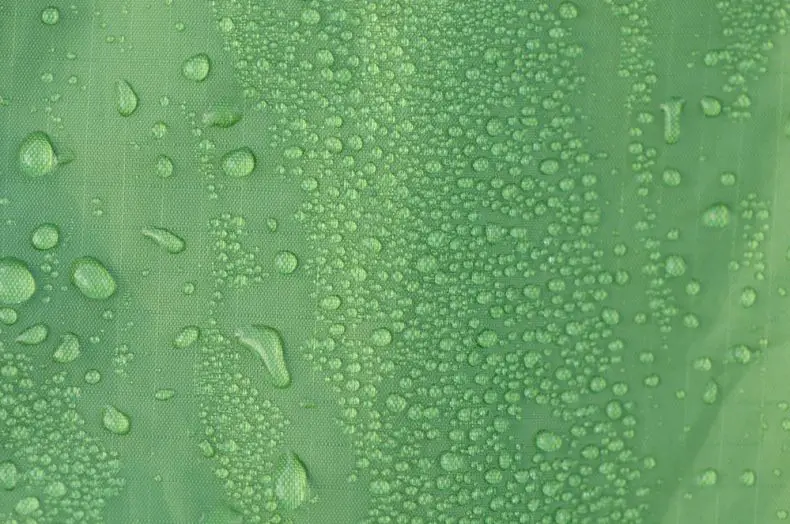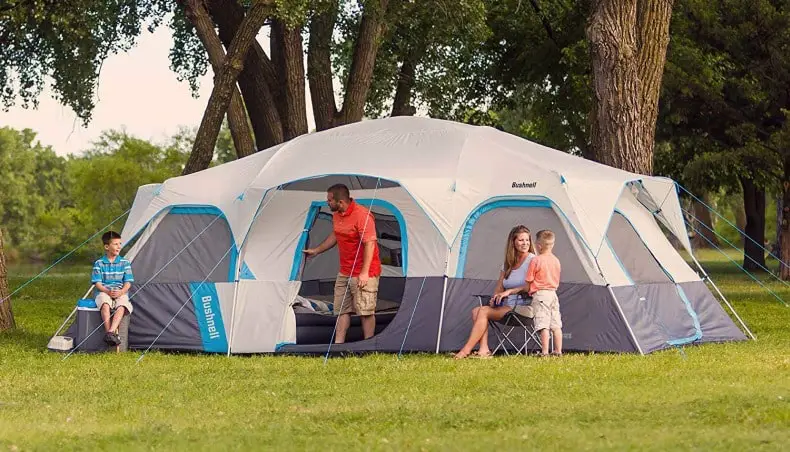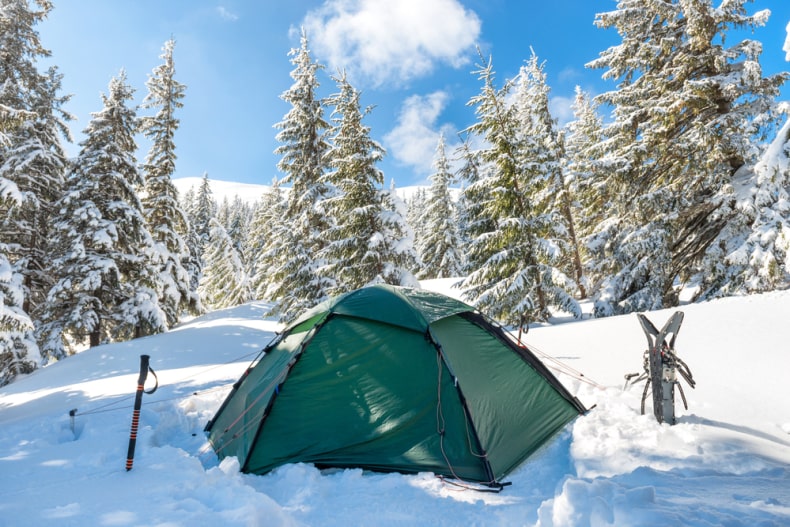With the summer here, warm weather will be the main thing to deal with for the next few months at least. It could be even longer in some places around the world. On top of this, wetter environments will be a huge issue too, especially inside the tent. Therefore, on your next camping trip, it might be good to know how to prevent condensation in a tent, right?
The Real Cause Of Condensation In Tents
Some people tend to call the formation of condensation “sweating” when mentioning objects, as it relates to what humans do in the same conditions. But what makes condensation occur?
Condensation is basically water that has collected as droplets on a cold surface the moment warm, humid air comes in contact with it. While warm air coming in contact with a cold object will do this, humidity is often the main cause of condensation in a tent. The reasoning for this is that humidity already produces water in the air. This will, obviously, result in this air attaching itself to objects warm and cool, including a tent wall.
It is the cold objects that make condensation form because warm objects cannot be affected by humidity in this form. In a humid environment, warm air inside a tent can cause moisture on the tent walls and other cool objects.
Yet you’re not here for a science lesson, rather, how to rid yourself of that pesky tent condensation that makes your sleeping bag feel damp, right? So let’s go over some ways to do that now so you can prevent condensation!
Ways To Reduce Condensation In A Tent
There are quite a few things one can do when it comes to reducing condensation inside your tent these days. Due to so many concepts, we felt we’d go with the most popular options that you can try. One or all could very well work perfectly for you.
We did not put these in any sort of order or ranking, so none are better or worse than the other for your needs. In the end, you can try them all and likely see some success against condensation regardless.
Remove Wet Shoes And Clothing
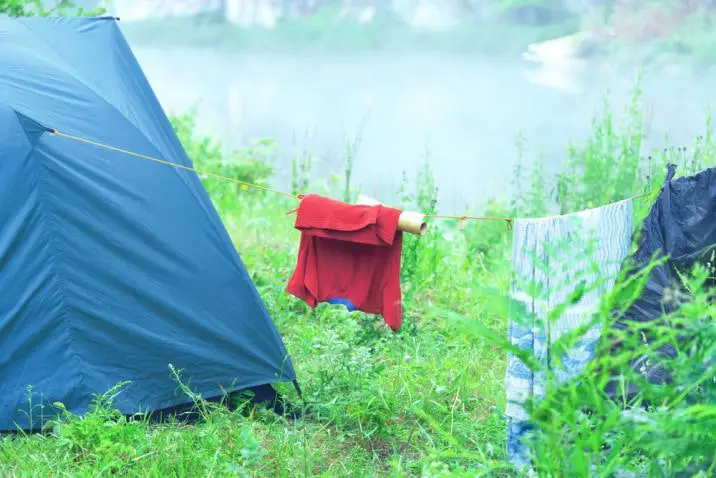
Don’t put wet gear inside a tent. Most of the time, you want to leave any wet clothes out to dry because it’ll only keep things cleaner in the tent. If you have a larger tent with essentially a patio, you can leave these things outside the tent. Just not inside the main occupancy section of the tent. This goes for any wet gear as well.
The reason for doing this is that you’re keeping your tent from taking in a wet item. You can likely get away with this during the day as your tent will likely be warmer from the sun and you could possibly avoid condensation.
Yet at night? Condensation will grow inside a tent throughout the evening into the morning. Therefore, leaving them outside your tent is best.
At the end of the day, you keep your tent cleaner and sleeping bags are less likely to get wet. Is there really a negative here?
Cook or Boil Water Outside Your Tent

This one should be obvious, but there are some occasions when it may not be as easy to do sadly. There are some tents with a stove jack that can allow you to cook or boil water inside your tent. However, these types of tents are best used in colder environments.
There’s less risk of major condensation in those places, so it’s not a big deal. This will not be the case in warmer environments. Cooking or boiling water inside your tent will result in lots of steam build-up, which will then become water that sticks to your tent.
Once things get a bit warmer, that tent is going to start releasing the water within and you’re going to have some drops hitting your head eventually. To avoid this, simply do not cook or boil water in the tent, rather, outside of it at a campfire.
Don’t Set Up Camp Next To A Water Source

Campsite selection also can play a part in tent condensation. For some reason, people assume camping near a water source will be a good idea for them. Yet there is a load of reasons not to do so. Animals will frequent water sources, sometimes big, scary types. On top of this, bugs tend to frequent the area too.
Naturally, it should be obvious that when humidity begins, it’ll be worse near water sources. It’s cool to set up your tent close by, but not right next to a water source. You want to be a little bit away from it, far enough to keep away from the issues but close enough to reach it when it’s needed.
This is kind of a give-and-take thing but it works perfectly. Condensation from water in the area won’t develop in your tent, as long as you set up camp far enough from the water. It’s just that simple, honestly.
Don’t Pitch Your Tent At A Low Point

When we mention a low point, we mean this in relation to the landscape in an area.
At night time, colder outside air will develop in these places. If your tent walls or rain fly happen to become cooler as a result, then you’re going to develop condensation.
Meanwhile, by pitching your tent away from the low points, you’re going to naturally have a slightly warmer tent.
Condensation, in turn, cannot build up from the cool outside air that comes at night due to this.
Increase Ventilation To Thwart Condensation In A Tent
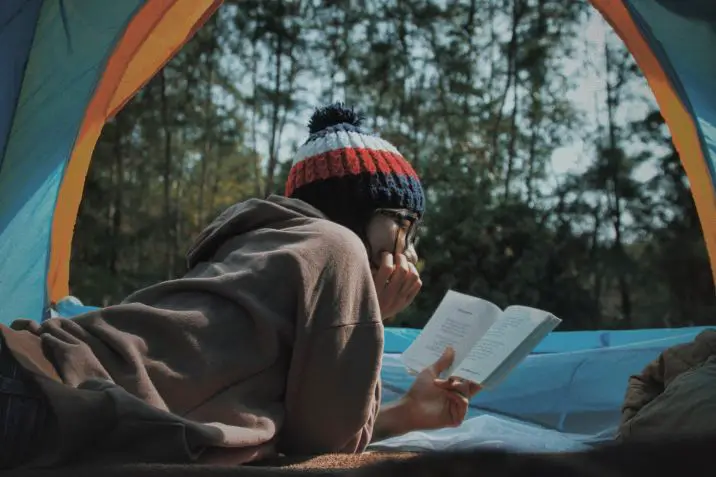
This should be an obvious one, but we feel it’s worth a mention. Proper ventilation is needed in your tent.
In fact, many tent brands actually make sure to note the type of ventilation their tents have due to the popularity of such things.
First and foremost, use a double-wall tent – a tent with a breathable inner layer such as mesh with a tent fly. Double-wall tents do much better at handling moisture than single-wall tents.
The best way to get proper ventilation is by rolling back any possible rain fly you might have. On top of this, you can also leave your vestibule door open too. Both will create an opportunity for increased airflow and for humid air inside the tent to escape.
On top of this, when we breathe in we will exhale warm air. This exhalation can cause condensation too, funny enough. With proper ventilation, this won’t happen.
Of course, ventilation is important for a lot of things beyond this too. Such as just keeping your tent cooler in the warmer months.
Use A Dehumidifier

Dehumidifiers are great for removing moisture. But, when you’re camping, you need something portable without the need for an electrical outlet.
When it comes to eliminating condensation from tents, the Afloia Cordless Rechargeable Dehumidifier is the ideal choice. This dehumidifier is perfect for small spaces such as tents. This small, but powerful device is designed to combat the moisture that can make a tent environment uncomfortable and potentially dangerous. It is 100% renewable and best of all, requires no batteries or cords for use.

